These Korean cucumber pickles are fermented simply in salt water. It is an age-old technique to preserve cucumbers beyond their growing season. No canning and no acidic liquid is used!
This is not your ordinary cucumber pickles! Oiji (오이지), Korean cucumber pickles, is fermented simply in salt water. It is an age-old technique to preserve cucumbers beyond their growing season. No canning and no acidic liquid is used! During fermentation, a deep tangy flavor develops, the color turns golden yellow, and the texture becomes crunchy and slightly chewy.
My mother’s generation used to pickle a large earthenware (hangahri, 항아리) full of cucumbers (100 or more) in early summer to consume throughout the summer and until the next growing season. Many households still do. Oiji is a humble but essential food item in Korea.
These days, commercially prepared oiji is also available in the deli section of Korean markets. That’s an option if you don’t get to make your own.
Korean cucumbers are light in color, slender, and bumpy with thin skin. They are available in Korean markets around here in summertime. Use Kirby pickling cucumbers if you can’t find Korean cucumbers. Look for the freshest ones that are thin and small.
How to make oiji
The process is quite simple, but the ratio of water to salt is the key. I use the ratio of 10 to 1, using Korean coarse sea salt. The salt water is boiled first and then poured, while still boiling hot, directly over the cucumbers. No, this will not cook the cucumbers. It’s a technique Korean homes traditionally use to keep the cucumbers crisp and crunchy during fermentation.
Make sure the cucumbers are entirely submerged in the salt brine at all times, or the exposed part will turn soft. I use a heavy plate or two to weigh them down.
In 2 to 3 days, the cucumbers will have released a lot of water, diluting the salt brine. Pour the brine out into a pot, and boil for a few minutes. Cool it this time, and pour back over the cucumbers.
You may see a white film develop on the surface of the water. That’s called golmaji (골마지), which is not harmful. Just remove it with a strainer.
How to serve oiji
These Korean fermented pickles are not meant to be eaten right out of the jar because they are quite salty. They are soaked in fresh water for the purpose of reducing the salt content before being used.
Sometimes, they are served in the water used to soak the pickles to be eaten like water kimchi (e.g., dongchimi). Oiji muchim (오이지 무침) is another common way to serve these cucumbers. After being soaked, thinly sliced cucumber slices are squeezed tightly to remove the water content, and seasoned with gochugaru and other seasonings. Both are summer staple banchan!
For more Korean cooking inspirations, follow along on YouTube, Pinterest, Twitter, Facebook, and Instagram.
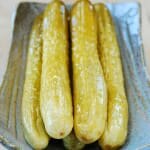
Ingredients
- 10 to 12 Korean white cucumbers small and thin (or 20 kirby pickling cucumbers, small and thin)
- 10 cups water
- 1 cup Korean coarse salt about 7 ounces
Instructions
- Rinse the cucumbers, and air dry or pat dry with a paper towel.
- Bring the water and salt to a boil, and continue to boil for 3 or 4 minutes.
- Place the cucumbers in a jar or a container (heat proof, BPA free). Pour the boiling water directly over the cucumbers, or you can put the cucumbers in the pot with the boiling water.
- Keep them entirely submerged in the water by weighing them down with a heavy plate or bowl. When the salt water has cooled down, close with the lid, and let stand at room temperature.
- After 2 to 3 days, pour the brine out into a large pot, and boil it for a few minutes. If there’s a while film (golmaji) on the surface of the water, strain it out before boiling. Then, cool completely.
- Pour the cooled brine back over the cucumbers. Close with the lid, and ferment at room temperature for 5 to 7 days, and then refrigerate. The color of oiji should be between olive green and yellow at this point. They can be eaten, but the flavor will further develop with more time, 2 to 3 weeks to a few weeks.
- To serve, thinly slice the cucumber and soak in fresh water until the desired salt level is achieved. You can also cut the cucumber into about 2-inch logs and quarter each one lengthwise. Sprinkle with some gochugaru and/or sesame seeds and garnish with chopped scallion, if desired. You can also add a little bit of vinegar to taste and drop in a couple of ice cubes.


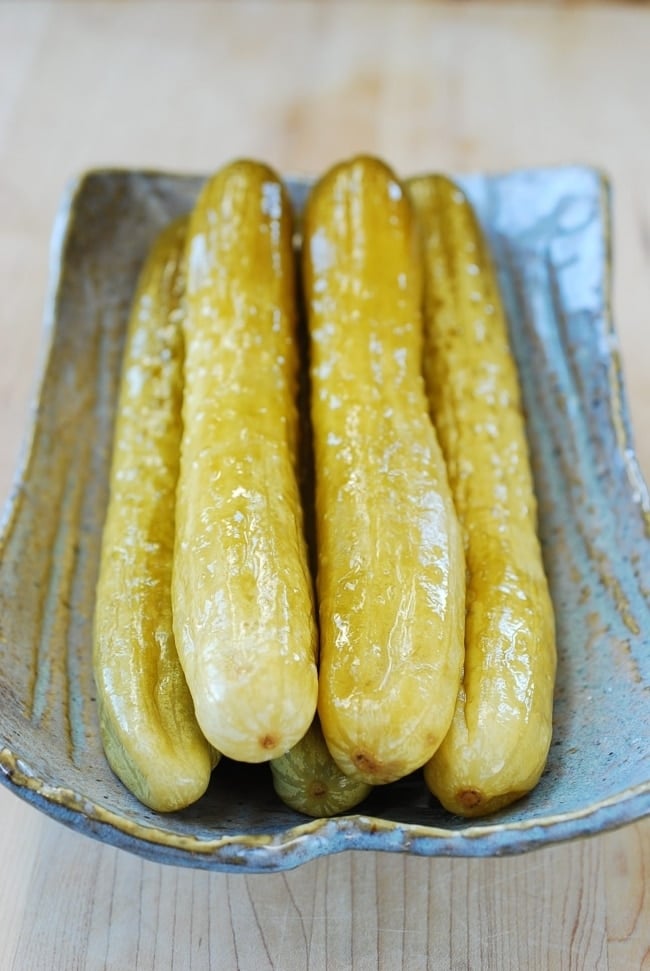
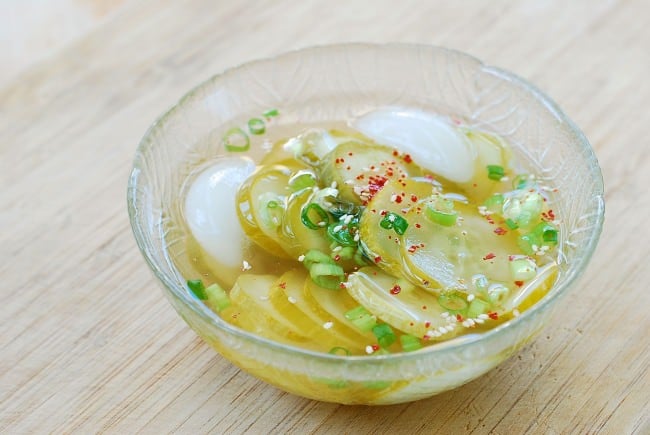
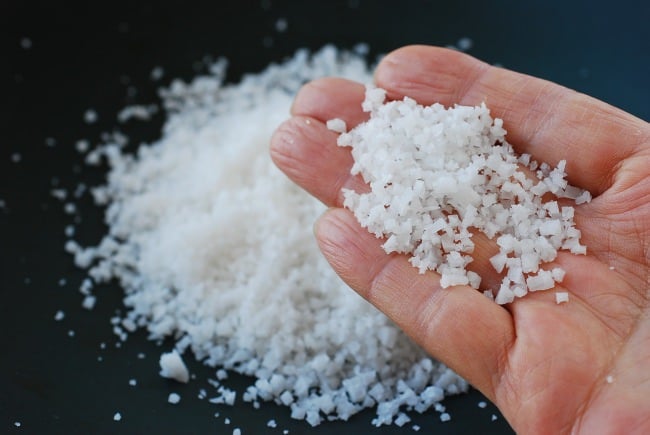
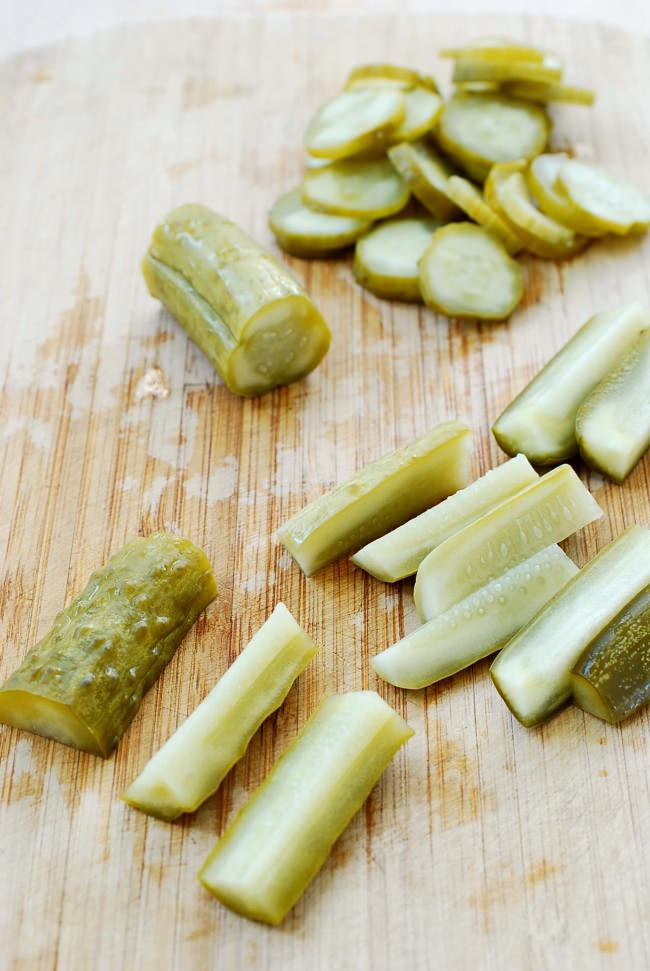
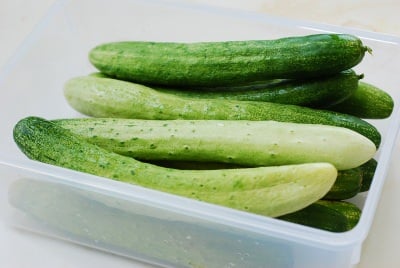
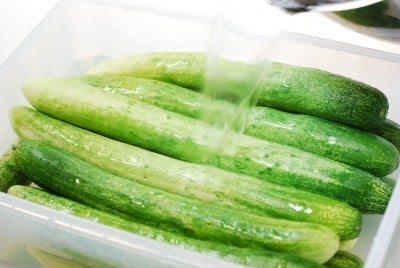
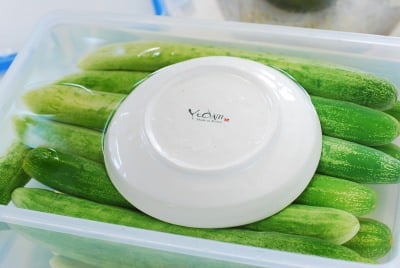
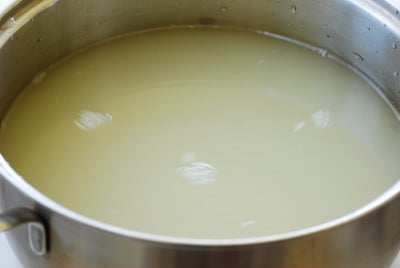
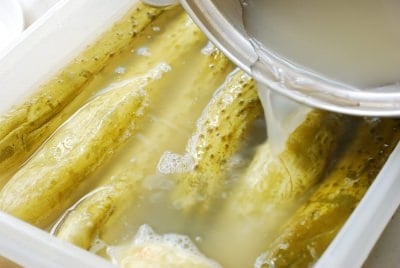
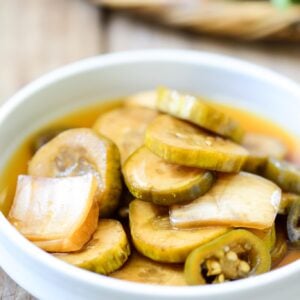

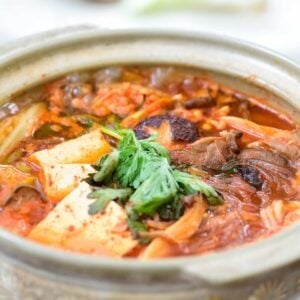
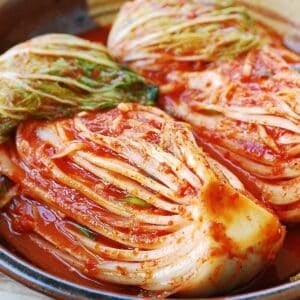












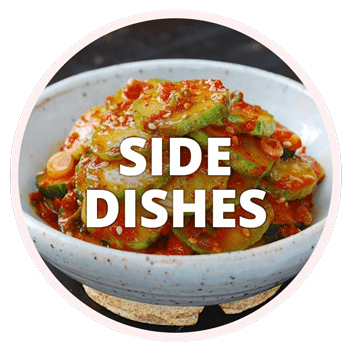
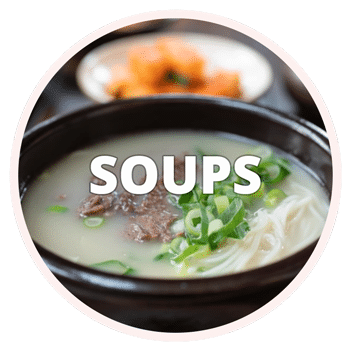
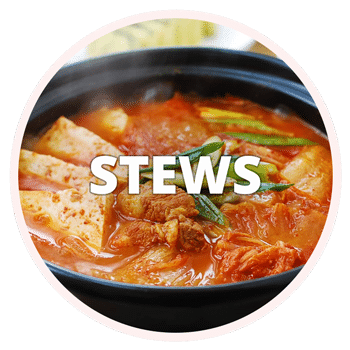
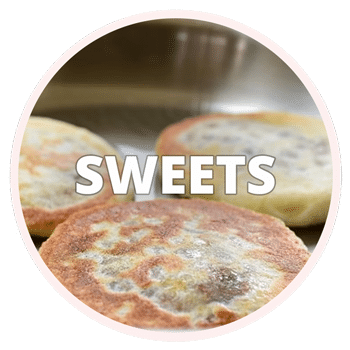

Cathryn Latimer says
Hello! I’m so happy to find this recipe and to be able to make my own oiji! Would English cucumbers be suitable for this recipe? It’s currently the only kind I can find similar to Korean cucumbers. Thanks again, for this childhood favorite dish!
Jamie says
Hello! Could I add soju to the brine? I remember my mom telling me if adding soju, the pickles will last longer and won’t mold? Is that true?
Hyosun says
Yes! Adding soju to oiji is not traditional, but some people do these days.
Christine Kim says
At step 5, I wasn’t thinking and poured the boiled brine back onto the cucumbers without letting the brine cool. Is the oiji ruined? Or will it still turn out ok?
On a side note, I love your recipes. My mother passed away a few years ago before I could learn all of her recipes. My mother was an amazing cook and I have wonderful memories of all her delicious food. I miss her more than words can say and your recipes have helped me recreate many of her dishes. Thank you so much!!
Hyosun says
Oiji may turn out a little soft, but just wait and see. And let me know how it is in 2 or 3 weeks. I’m so sorry to hear about your mom’s passing. It’s great that you’re recreating her delicious food through wonderful memories. I’m happy to be helpful.
Christine Kim says
They turned out perfectly!
Elysia says
Hi, I’m Currently in the process of making this dish but I was wondering when you were transferring the pickles to the refrigerator do you take them out of the water or do you leave them as is? Also I accidentally used coarse sea salt instead, would you know if this will affect my cucumbers?
I love you’re recipes, they’re very similar to my mothers but instead of vague descriptions in Konglish with no measurements I can actually make these dishes, thank you so much!
Hyosun says
Oh you should leave them in the brine. Coarse sea salt is fine. Thank you for using my recipes!
Ellie says
Thanks so much for this recipe! I don’t have a container long enough for my cucumbers. Is it ok to cut them before pickling? Or do they need to be pickled whole.
Thanks!!
Hyosun says
These should be pickled whole. Cutting can cause the cucumbers turn soft during fermentation.
Seunga says
Hi, thank you for posting this recipe!! My mom made this a lot growing up. I am looking forward to trying this recipe. I have a question though. Once the pickles are pickled, how long do the pickled pickles keep?
Hyosun says
If properly prepared, they last months in the fridge. I still have the ones I made at the end of summer, which are still good.
Julie Binder says
Hello Hyosun,
I am making these pickles this week, I will complete my first ferment tonight and boil off my brine. So far so good! My question is this: When I complete my second ferment do I store the pickles in the brine? And at that point can I add some spices to the jar of pickles? Thanks
Jay says
Korean food is my favorite of all cuisines. Someone took me on a date to a Korean restaurant in 1976 and it was a revelation. I have learned to make a few things through the years but your site is so clear and concise. The pictures are so instructional. I am learning to make so many more things now. Thank you because I moved from NYC to Florida and there are no Korean restaurants here. Having your site to rely on is a gift!
julie says
Hello!
I am really enjoying your website to make Korean food. I have a question here – I am currently at step 6, where I have the cucumbers out again in room temperature. It is day #4 and I am seeing some white stuff on the top of the cucumbers, even if it is submerged under the water. I moved it in the fridge, but is it safe to eat? I hope so!
Thank you very much!
Hyosun says
Thank you, Julie! yes safe. I mentioned that in the body of the post as well.
Winterfairy says
I made it. I’ll try in a few days. I love pickled veggies. Thanks for this.
Hyosun says
oh hope it turns out well for you!
Emily Kil says
Thank you for posting this recipe. This is one of my favorite ban chans that is served with spicy tofu soup. The ice cold cucumbers pair well with the hot spicy soup. I’m making it now. It’s so easy, I can’t believe I’ve waited so long to make it.
Sheri Smith says
Hi. My mom passed away in February. She taught me how to cook both Korean and food from all over. My father was caucasian…meat and potatoes. I made kimchee and all the geegess by myself. Mom did not live with me but she could see my kitchen over hundreds and even across the country to tell me what I needed to add. She didn’t quite trust me to make Korean food because her hands weren’t there to make everything uma masheeso.
First time making this…turned out so good I cried. Thank you.
Jay says
Oh my. You made ME cry!! Good luck with your cooking adventures…have fun with it. Especially if it’s part of your heritage. I’m Italian_american, but Korean is my favorite food. I love it here as all the recipes are so well explained, and Hyosun does come in regularly to answer questions.
Roda says
The romanian pickled cucumbers recipe is identical, except that in the salty water we put some ingredients for aroma, such as pepper seeds, thyme, dill, sour cherry leaves and a laurel leaf. In the pot, between cucumbers, we put some horseradish to keep the cucumbers crunchy. We eat them during winter time…
Jay says
Your family recipe sounds delish too! I love the idea of sour cherry leaves (though I’ve never had them). Sounds scrumptious. I imagine they get a bit of a kick from the horseradish like these would from the gochugaru. Mmmmm. Every cuisine has something wonderful to offer us….
Judith says
Korean Kosher pickles! 😉 All the cucumbers I planted this year failed – next year I will plant only Korean cucumbers. This looks great!
STEVE S. says
Hello. I made Oiji (Korean Pickled Cucumbers) a few days ago and was very pleased with the result. I followed every step to the letter, however I used Persian Cucumbers and Maldon Sea Salt Flakes. The results were outstanding and everyone in the family loved the cucumbers. Today I made another batch in my one gallon jar. Great recipe and THANK YOU.
Jay says
Thanks forposting this. I know I can’t get Korean cukes here in Fla and was thinking on the kirbys but using persians sounds like a much better idea. I’m glad you had good luck with them.
Amanda Ruane says
Hello.
I remember my mom making this cukes. My sister would eat them with rice every meal. I on the other hand liked the other way – muchim. I think I will make some for my sister with this recipe. When my mom passed away two years ago (I miss you so much everyday) I wondered how I would cook Korean food. Now with Internet so many things are possible. Thank you so much for your recipes.